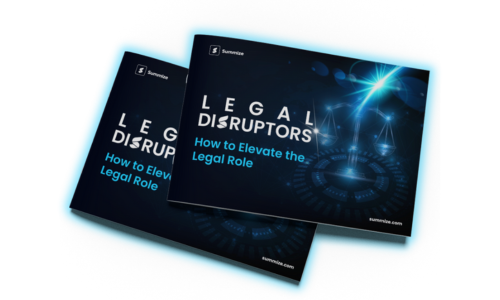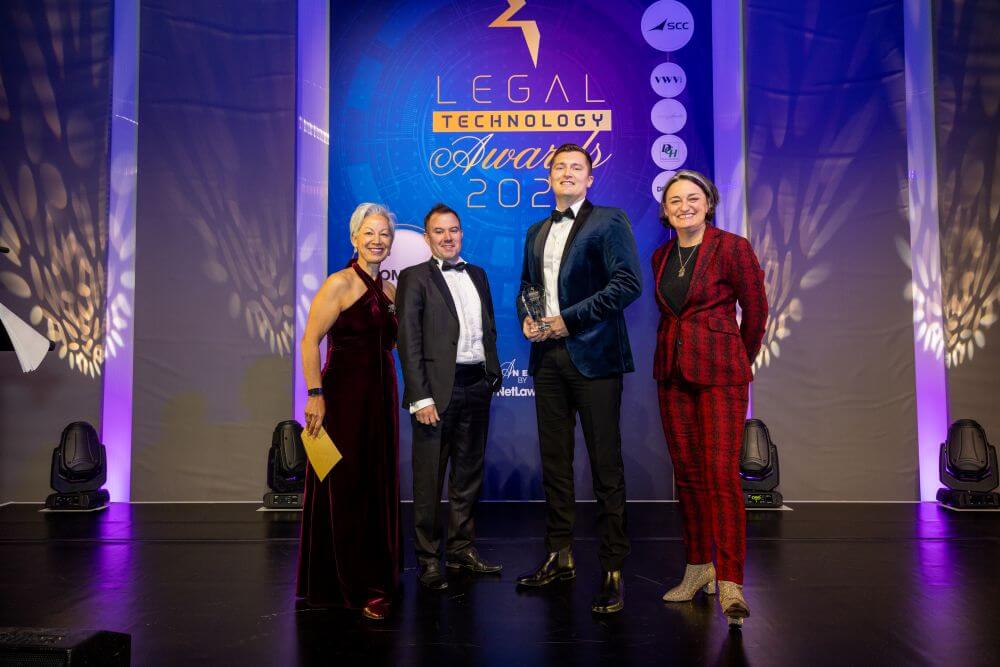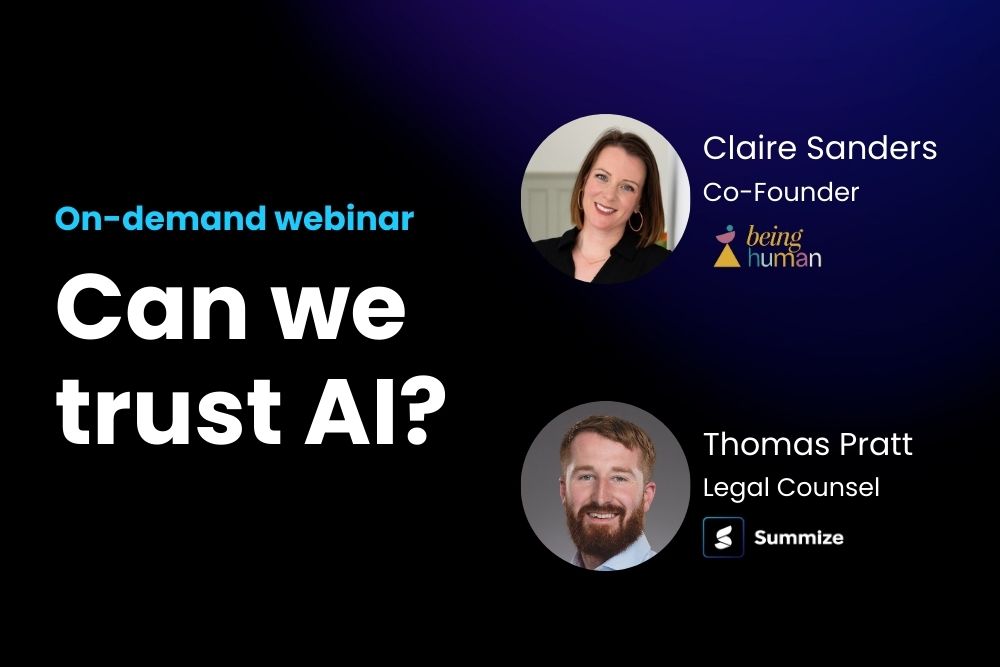Legal Tech StartUp Focus: Tom Dunlop and Dave Smith
On this podcast, Tom Dunlop and Dave Smith join Charlie Uniman from the Legal Tech StartUp Focus podcast to discuss Summize, the market, and their journey.
April 7, 2021
December 19, 2025
The Legal Tech StartUp Focus Podcast, hosted by Charlie Uniman, shines a light not just on legal technology, but on the startups behind it, the people, ideas and decisions that shape how legal tech is built, sold and adopted. In this episode, Charlie is joined by two of Summize’s founders – CEO Tom Dunlop and Chief Development Officer David Smith. Together, they share their professional journeys and unpack the thinking behind Summize’s product, culture and growth.
Meet the podcast speakers
Charlie Uniman opens the conversation by setting the scene for the podcast’s mission: to explore startup life, management, investing and user adoption through the lens of legal tech companies. His guests in this episode bring complementary perspectives.
Tom Dunlop comes from a legal background. Formerly a practicing lawyer, he spent much of his career in-house at technology and software companies, often as General Counsel or Legal Director. Working closely with fast-growing tech businesses exposed him to innovation first-hand and highlighted the inefficiencies lawyers face in their day-to-day contract work. Those frustrations, and the desire for tools that delivered value immediately, ultimately led him to co-found Summize.
Dave Smith, by contrast, brings deep technical experience. With around 30 years in software development across a wide range of technologies and organizations, Dave entered legal tech through a chance conversation with Tom. What began as an attempt to solve a specific problem, such as how to review contracts automatically, evolved into the foundation of Summize’s technology and platform.
Solving low-value contract work
One of the central topics of the podcast is the problem Summize set out to solve. At its core, Summize is designed to remove low-value, manual work from contract review. The product began with a focus on instant contract summaries, particularly for high-pressure scenarios such as due diligence or large-scale contract reviews, where lawyers may need to analyze hundreds of agreements quickly.
Rather than simply extracting data, Summize aims to create usable summaries that lawyers can share internally or with clients. This focus on practicality reflects Tom’s experience as an in-house lawyer who needed solutions that worked immediately, without lengthy training or implementation.
Ease of use and time to value
Another key theme is ease of use and “time to value.” Tom repeatedly emphasizes that Summize was built for busy lawyers who cannot afford long onboarding processes. From day one, the product is designed to work without extensive implementation, configuration or training, allowing users to see tangible benefits almost immediately.
This philosophy also shapes Summize’s onboarding approach. Instead of walking users through every feature, the team focuses on solving one specific use case first, whatever will deliver the most value in the next few days. Only then do they expand to additional functionality, keeping engagement high and adoption practical.
Meeting lawyers where they work
A third major topic is Summize’s decision to integrate directly into tools lawyers already use. Recognizing that lawyers spend much of their time in Microsoft Word and collaboration platforms like Microsoft Teams or Slack, Summize positions itself as an enhancement rather than a replacement.
Pre-signature work happens through a Microsoft Word add-in, allowing lawyers to draft and review contracts without leaving their familiar environment. Post-signature, Summize overlays existing document or contract management systems, enabling users to ask questions of their contracts directly through tools like Teams or Slack. This “go where the lawyers are” mindset underpins the product’s design and differentiates it from more rigid, end-to-end platforms.
Culture, creativity and growth
Beyond the product, the podcast also explores Summize’s internal culture. Tom highlights the importance of building a team that is genuinely passionate about the problem being solved. From continuous improvement principles to creative thinking about how lawyers work, this culture has helped Summize scale across the UK and into international markets such as the US and Australia.
The discussion also touches on broader changes in the legal industry, including growing acceptance of cloud-based tools and the rise of the “virtual office,” trends accelerated by the pandemic and increasingly driven by client expectations.
This episode offers a thoughtful look at how legal tech startups can succeed by focusing on real user problems, fast value delivery and thoughtful integration into existing workflows. To hear the full conversation, including deeper insights into startup management, marketing and onboarding, be sure to listen to the complete episode of the Legal Tech StartUp Focus Podcast at the start of the article.
And to explore more of our insights, take a look at our articles below.
Discover even more!
Explore more about contracting and CLM in our ultimate contract guides








